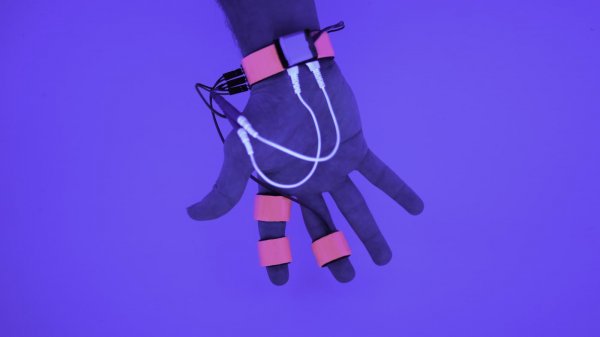Scientists At MIT Are Building Devices That Can Hack Your Dreams
Tags: News

A group of MIT researchers are developing a dream hacking device which could allow users to manipulate their dreams in order to improve their lives.
Many of us spend nearly a third of our time asleep. Of course the body needs to rest. But it also seems like lost time. So what if one could make better use of the time spent sleeping?
Now we may be able to – by tapping into our unconscious thoughts and programming what we dream about.
Research has found that dreams may contribute towards memory consolidation as well as mental and emotional health.
Scientists at MIT’s Dream Lab have the goal of taking this a step further – they want to show that dreams are access points to deeper levels of cognition, and that dreams can be manipulated for the positive purpose of improving a person’s waking life.
It’s actually not a new idea. Some of the most brilliant minds – the likes of Beethoven, Poe, John Kennedy, Dalí, Tesla and Edison all made use of a similar concept.
Their method involved getting into a comfortable position while holding a steel ball in the hand. Then, just as they were falling asleep, the ball would drop. The individual would then wake up and immediately record what had passed through their mind as they were reaching the initial dream state. It reportedly helped them greatly in coming up with new creative concepts.
Dormio, the dream hacking machine
From improving your mood to enhancing creativity and productivity, there could be many potential beneficial uses.
The device which Dream Lab have designed to do this is called the Dormio. The Dormio is optimized to be able to tap into and influence the semi-lucid sleep state, known as hypnagogia.
Hypnagogia describes the moment just before you fall completely asleep which usually comes with distorted images of space and time. Its when the logical boundaries and cognitive filters of the conscious mind become mixed with the abstract world.
Read more: This Mutant Bacterial Enzyme Could Recycle Plastic Bottles In Just Hours
The device consists of an electronic glove with sensors which can measure heart rate, skin conductance and muscle tone, as well as gauging when the user falls asleep.
At that stage, the Dormio provides an audio cue, which is supposed to return the person into a state of hypnagogia without being completely woken up. An app or bot then strikes up a conversation with the semi-conscious person and records the interchange.
It was discovered that the chosen word often becomes incorporated into the person’s lucid dreams. Aside from audio cues, the Dream Lab are also working on another stimulant – smell. And they have enjoyed success with this as well.
Technically, anyone can make a dream machine
The device is not overly complicated or expensive to make and the Dream Lab team have shared the software and hardware instructions online.
The hope is that the more people that use the Dormio, the more analysis on the results can be done.
“What’s exciting about this group is that they’re making devices that are so cheap and so easy to use at home and not very distracting from normal sleep that they enable research to be done in larger numbers and on a shoestring budget,” Harvard professor and dream researcher Deirdre Barrett, PhD, said.
“And without having to bring people into a lab, we can get better data on what naturalistically happens with dreams.
Image credit: Oscar Rosello/ MIT Media Lab
Leave Comment: